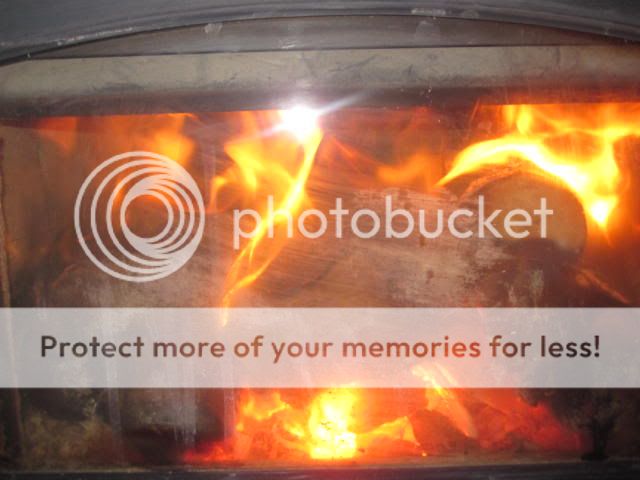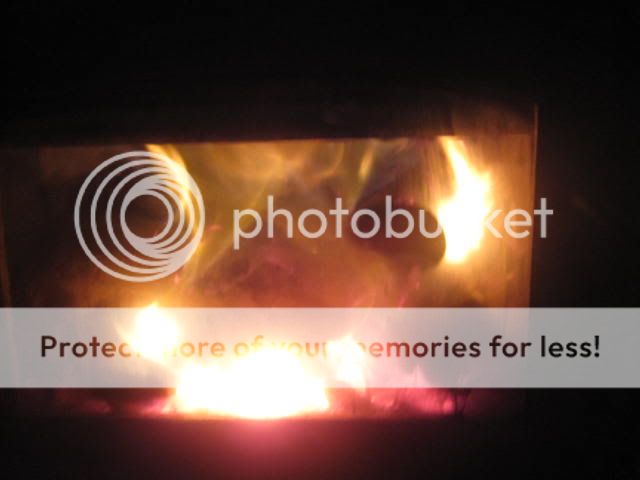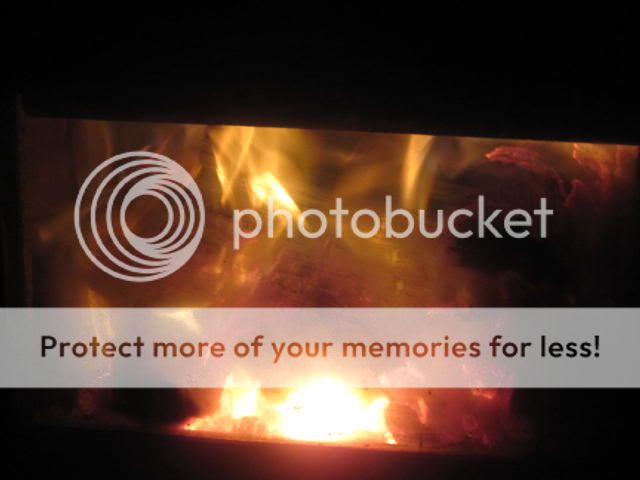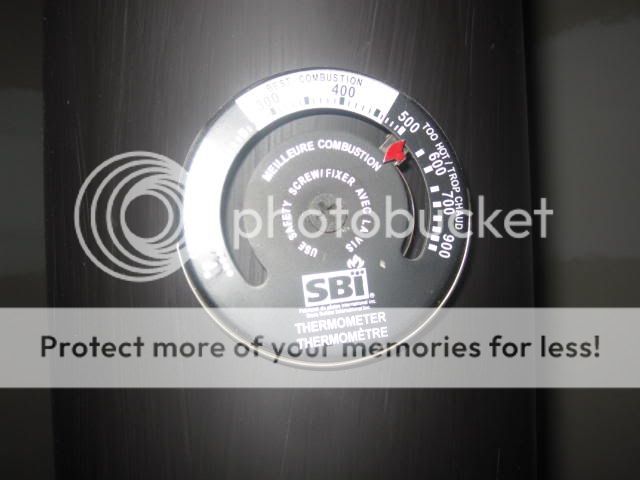Huntindog1
Minister of Fire
I think its your wood also. If the wood has too much moisture your gonna burn at too high of setting to compensate or the extra moisture.
Plus your gonna with the not so good wood burn the stove open longer time to get the fire going then when you close down the air you have little amount of the wood left to produce smoke gases to burn the secondaries.
Its the burning of the smoke gases that make the stove put out the extra heat that its rated at. Your not getting the stove up to heat fast and quick so as not to be burning up the main wood for a long burn that is hot , hot as your burning more smoke than burning the wood. Wood has to burn slow then the smoke produced from the slow burning wood is burned from the secondary tubes up in the top of the stove. If you get the stove top up to say a 700 temp then you cut the air back to let the main logs produce smoke and burn slower , you should see good secondary burning , its this secondary burning that helps the stove maintain stove top temps to sustain secondary burning at high temp as long as the logs can produce smoke gases.
What you need to do is get a stove full of hot coals, rake the coals to the front of the stove, so you can load a big split in the back of the stove all the way to the bottom of the stove so as not hot coals are under it. Then load another split on top of that back split so that the wood it almost up to the secondary air tubes but leave at least and inch or two of space. Then load a second row of splits one on top of the other like the back row but this second row maybe sitting on coals depends on how far forward you can rake the coals but thats fine its that back row laying all the way on the bottom that gives you a longer burn.
So now that you have 2 rows lets say 4 splits loaded, there should be a space up front of the stove in which you could load a third row of splits on coals but dont , what you want to do is load some small kindling on top of all the coals raked to the front . load small kindling and lots of it as much as you can with out it falling out the front if you open the door. Also if you want after the kindling for a better heat up put some rolled up news paper knots on top of the kindling. Thats taking a full page of news paper and rolling it up so you end up with a longs tube of the thin newspaper take this long tube bend it and tie it in a loose knot , this makes a newspaper knot that will burn very hot and fast to quickly heat up your flue and creates draw so as the stove gets more air. Those small kindling with the coals below them and paper on top should start to burn hot and fast to bring your stove up to temp very fast.
The idea here is to get the stove hot fast so as not to sit there waiting for ever for the stove to reach high temps. THus having still your full load of wood to smolder and create smoke to burn. Plus this kindling getting the stove very hot will enable you to light off the secondaries by backing down the air little bits at a time.
Remember this important point that its the stacked wood up to the secondaries that reduces the space up there and this reduced space is a smaller space in which to build the high heat in which to ignite the smoke gases.
What I do for an added effect is once the stove is hot and the kindling is burned down in front of the stove I will put another log on the third row space up by the door. that I left open for the kindling. I only do this if the stove is really hot as I dont want to open the door and kill my secondary burning. Its the really hot stove that lets me add another log up front. Then get the stove a rockin then slam it down for a slow burn.
Remember you want to get the heat up fast and quick so as to not spend time burning or using your main load to get the temps up especially in your case if your wood has moisture in it I would get the stove up to a hotter temp quickly to compensate.
Plus your gonna with the not so good wood burn the stove open longer time to get the fire going then when you close down the air you have little amount of the wood left to produce smoke gases to burn the secondaries.
Its the burning of the smoke gases that make the stove put out the extra heat that its rated at. Your not getting the stove up to heat fast and quick so as not to be burning up the main wood for a long burn that is hot , hot as your burning more smoke than burning the wood. Wood has to burn slow then the smoke produced from the slow burning wood is burned from the secondary tubes up in the top of the stove. If you get the stove top up to say a 700 temp then you cut the air back to let the main logs produce smoke and burn slower , you should see good secondary burning , its this secondary burning that helps the stove maintain stove top temps to sustain secondary burning at high temp as long as the logs can produce smoke gases.
What you need to do is get a stove full of hot coals, rake the coals to the front of the stove, so you can load a big split in the back of the stove all the way to the bottom of the stove so as not hot coals are under it. Then load another split on top of that back split so that the wood it almost up to the secondary air tubes but leave at least and inch or two of space. Then load a second row of splits one on top of the other like the back row but this second row maybe sitting on coals depends on how far forward you can rake the coals but thats fine its that back row laying all the way on the bottom that gives you a longer burn.
So now that you have 2 rows lets say 4 splits loaded, there should be a space up front of the stove in which you could load a third row of splits on coals but dont , what you want to do is load some small kindling on top of all the coals raked to the front . load small kindling and lots of it as much as you can with out it falling out the front if you open the door. Also if you want after the kindling for a better heat up put some rolled up news paper knots on top of the kindling. Thats taking a full page of news paper and rolling it up so you end up with a longs tube of the thin newspaper take this long tube bend it and tie it in a loose knot , this makes a newspaper knot that will burn very hot and fast to quickly heat up your flue and creates draw so as the stove gets more air. Those small kindling with the coals below them and paper on top should start to burn hot and fast to bring your stove up to temp very fast.
The idea here is to get the stove hot fast so as not to sit there waiting for ever for the stove to reach high temps. THus having still your full load of wood to smolder and create smoke to burn. Plus this kindling getting the stove very hot will enable you to light off the secondaries by backing down the air little bits at a time.
Remember this important point that its the stacked wood up to the secondaries that reduces the space up there and this reduced space is a smaller space in which to build the high heat in which to ignite the smoke gases.
What I do for an added effect is once the stove is hot and the kindling is burned down in front of the stove I will put another log on the third row space up by the door. that I left open for the kindling. I only do this if the stove is really hot as I dont want to open the door and kill my secondary burning. Its the really hot stove that lets me add another log up front. Then get the stove a rockin then slam it down for a slow burn.
Remember you want to get the heat up fast and quick so as to not spend time burning or using your main load to get the temps up especially in your case if your wood has moisture in it I would get the stove up to a hotter temp quickly to compensate.








